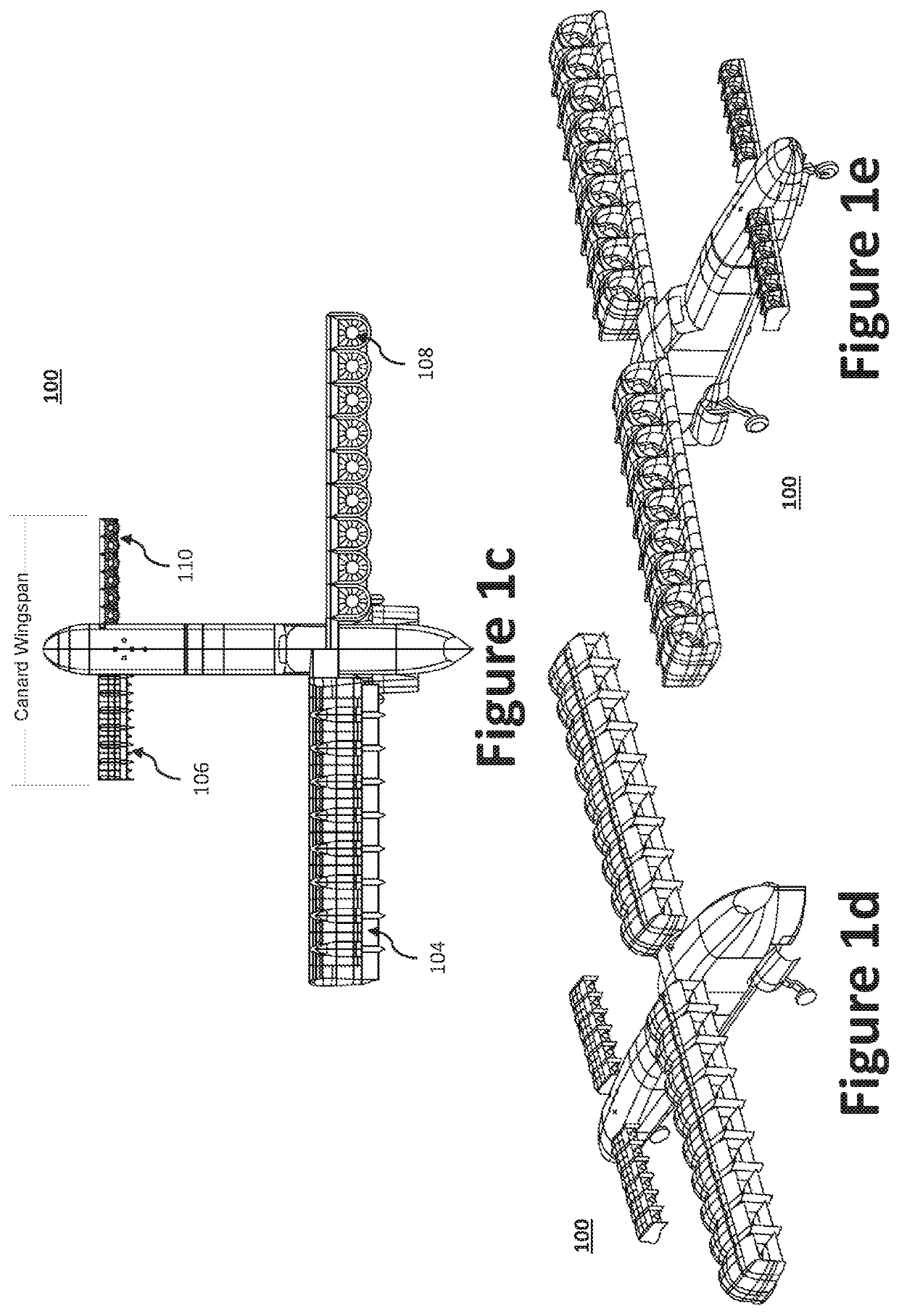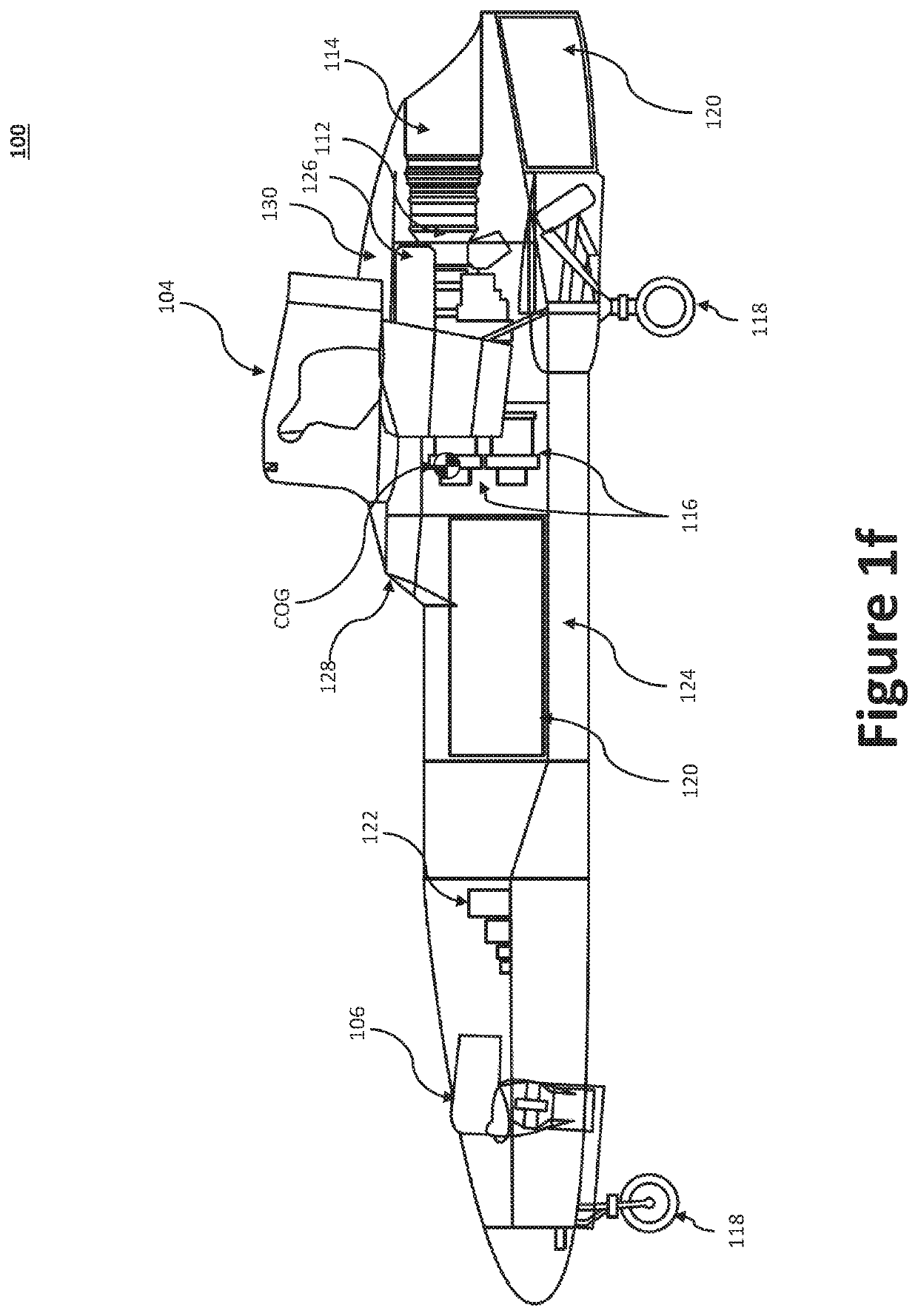Hybrid propulsion vertical take-off and landing aircraft
a technology of hybrid propulsion and vertical take-off, which is applied in the direction of canard-type aircraft, vertical landing/take-off aircraft, and efficient propulsion technologies, can solve the problems of preventing the development of efficient vtol uavs, and achieve the effect of removing nois
- Summary
- Abstract
- Description
- Claims
- Application Information
AI Technical Summary
Benefits of technology
Problems solved by technology
Method used
Image
Examples
Embodiment Construction
[0055]Preferred embodiments of the present invention will be described hereinbelow with reference to the accompanying drawings. In the following description, well-known functions or constructions are not described in detail because they may obscure the invention in unnecessary detail. For this disclosure, the following terms and definitions shall apply.
[0056]As utilized herein the terms “circuits” and “circuitry” refer to physical electronic components (i.e. hardware) and any software and / or firmware (“code”) which may configure the hardware, be executed by the hardware, and or otherwise be associated with the hardware. As used herein, for example, a particular processor and memory may comprise a first “circuit” when executing a first set of one or more lines of code and may comprise a second “circuit” when executing a second set of one or more lines of code. As utilized herein, “and / or” means any one or more of the items in the list joined by “and / or”. As an example, “x and / or y” m...
PUM
 Login to View More
Login to View More Abstract
Description
Claims
Application Information
 Login to View More
Login to View More - R&D
- Intellectual Property
- Life Sciences
- Materials
- Tech Scout
- Unparalleled Data Quality
- Higher Quality Content
- 60% Fewer Hallucinations
Browse by: Latest US Patents, China's latest patents, Technical Efficacy Thesaurus, Application Domain, Technology Topic, Popular Technical Reports.
© 2025 PatSnap. All rights reserved.Legal|Privacy policy|Modern Slavery Act Transparency Statement|Sitemap|About US| Contact US: help@patsnap.com



